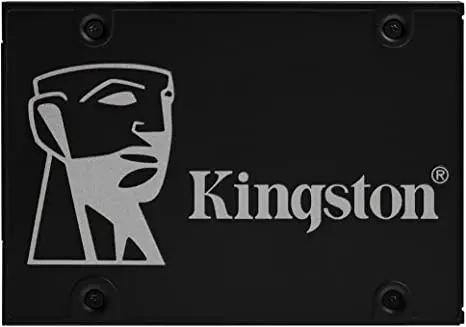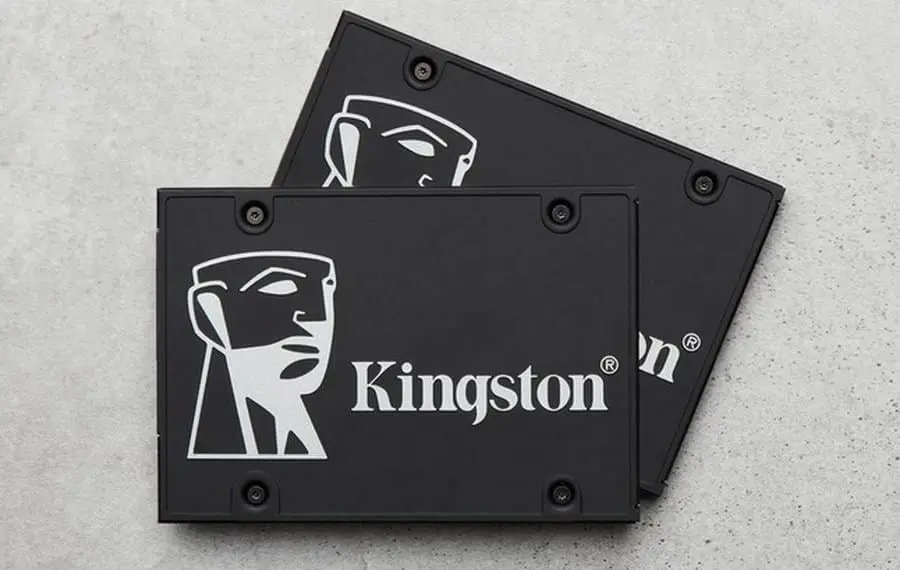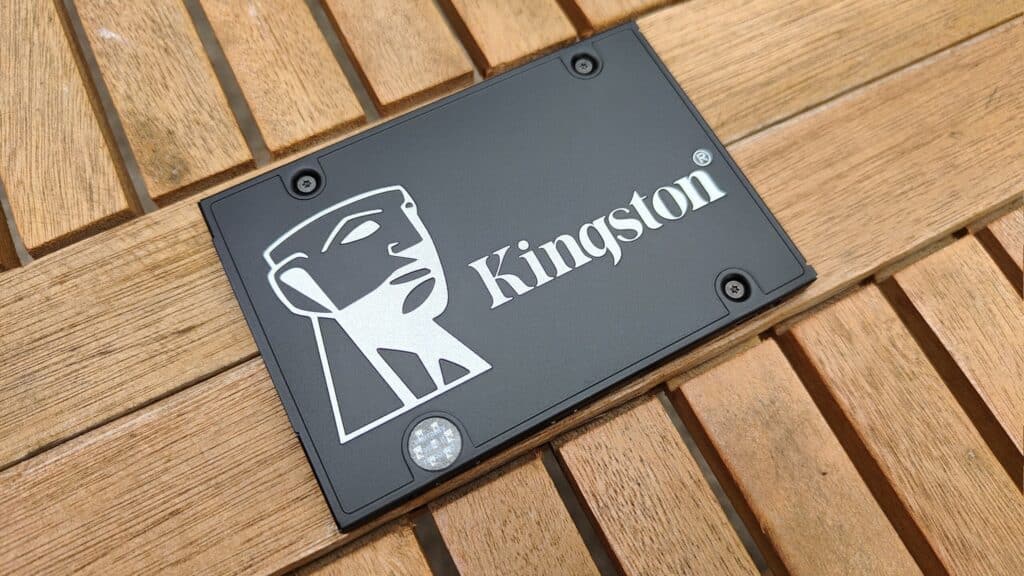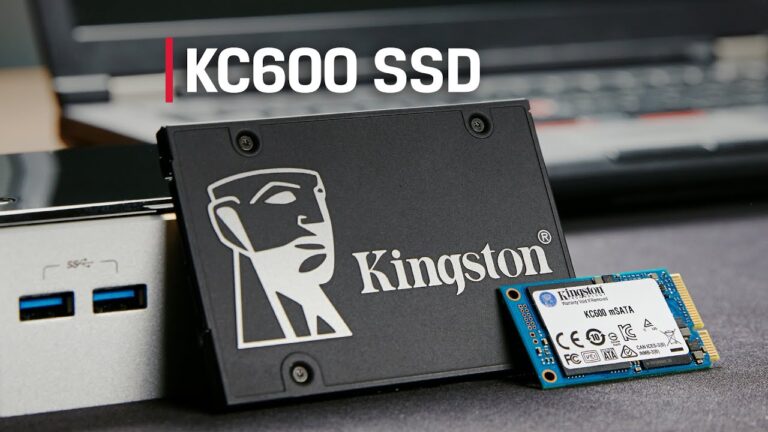If you’re searching for top-tier 2.5-inch SSD performance, you won’t find much better than Kingston’s KC600. It’s tiny and light, and there’s no performance loss during extended writes, as is common with low-cost drives. However, you will be charged for the privilege.
SATA-connected SSDs are already popular, with reading and write speeds exceeding 500MB/s, and they’re a drop-in alternative for SATA physical hard drives in both laptop and desktop systems. Because SATA has reached its performance limit and the new high ground is NVMe M.2 attached SSDs, the Kingston KC600 SSD enters a highly competitive market where performance is secondary to cost.
How does the KC600 compare to the best that Samsung or Crucial has to offer, and is the pricing attractive enough to entice enough buyers?
What will you see here?
Price & Availability

The KC600 originally comes with three drive sizes, and the larger drives are, predictably, more costly. The bare drive for 256GB costs £39.66, the 512GB model costs £65.32, and the 1TB model costs £145.80. It can also come with an installation kit, as the 1TB hardware did. This adds roughly £15 to the entire cost. However, if you go via Insight, Scan, or eBuyer, the prices are lower. You may also purchase through
In the United States, the 512GB model costs $67.99 from
According to the bare drive costs, the 512GB model is the greatest value per GB, while the 256GB variant is the most costly. A second 2TB model has been announced but has yet to be released through the retail channel.
In terms of 1TB drives, the Kingston KC600 costs more than the WD Blue 3D NAND, Crucial BX500 and MX500, Samsung 860 QVO, Patriot Burst, SanDisk PLUS, and PNY SC900. It is, however, less expensive than the closest specification competitor, the Samsung 860 EVO.
When the 2TB model is released, it may prove popular. However, SanDisk and Samsung also provide 4TB SSDs in this physical factor for individuals who just need a single drive.
Design & Build

The KC600 series makes use of a 96-layer TLC NAND and a Silicon Motion 2269 controller. DRAM cache has a 1:1000 ratio, which is 1MB of DRAM for 1GB of capacity. As a secondary cache, some of the TLC is assigned as SLC. The drives have a 5-year guarantee and a 150TBW rating per 250GB of storage, which means the 1TB version
SATA SSDs are available in 2.5inch or M.2 form factors. The KC600 is exclusively available as a 2.5inch drive with capacities of 256GB, 512GB, 1024GB, and 2048GB.
Kingston will give a really good installation kit that includes a 2.5-3.5inch installation tray, SATA and Molex-to-SATA-Power connections, a USB drive caddy, and a 7mm-9mm disk shim if you wish to spend a little extra.
There are few things less fascinating than 2.5inch form factor SSDs, and the Kingston KC600 does not defy those standards. It’s a box the size of a hard drive form factor that dates back to the previous century, with all the sophisticated stuff buried within as usual.
Along with a reading performance of 550MB/s and a write performance of 520MB/s. The Silicon Motion controller also has S.M.A.R.T, TRIM, NCQ, TCG Opal, and hardware AES 256bit encryption. The ability to hardware encrypts the whole drive has long been a feature of high-end SSDs. However, Kingston included it here to give the KC600 a feature set that equals what Samsung provides on its 860 series.
Performance

Kingston provided us with a 1TB version of the KC600 that proved to be a very good performer—among the quickest we’ve encountered at all workloads. It’s worth noting that the 256GB model is listed for 20MBps slower writing, which is likely owing to fewer chips to shoot data over.
In evaluating a SATA SSD, there are just three important things to consider: pricing, performance, and longevity.
For the time being, cost aside, the performance of any SATA drive is primarily limited by the interface, and the KC600 is a prime example of a flash drive that is constrained by SATA 6Gb/s bandwidth.
The KC600 also offers similar TBW across capacities, with the 1TB review hardware having a significant 600TBW lifetime. This is the same as writing a 50GB file to the disk every day for over 33 years. As a result, unless you are editing 4K video files every day, the KC600 is unlikely to wear out before being changed by the natural cycle of technology.
It is possible to obtain SSDs that are marginally faster, such as the Samsung 860 Pro, however that drive costs at least 70% more for a single percentage point boost in write speed and maybe 10% more IOPS.
Is Kingston a good brand of SSD?
Excellent value and performance at an incredible price. Kingston has been in the flash memory game for as long as any other manufacturer, and their dependability is on par with, if not better than, that of Samsung and any other company on the market.
Also, it is a very good performance. It has good encryption with support for TCG Opal, AES 256-bit, and eDrive.
Which is better SSD Crucial or Kingston?
Kingston ranks second on the list, beating the MLC cells from the previous Samsung SSD, whereas Crucial won this round. Keep in mind that the larger the drive, the better the overall efficiency. As a result, in order to maintain an apples-to-apples comparison, we will evaluate the Crucial & Kingston together.
Conclusion
The first issue is that the period of SATA-connected disks is getting more historical with each passing day. If you want the best SSD speed, go with NVMe PCIe SSDs. Which are up to 6 times quicker than the KC600 no matter what system you connect it to.
The second issue is that the margins for undercutting other SSD manufacturers are minimal, especially when Kingston’s competition is Crucial, which is also Micron, the manufacturer of the NAND utilized in this device.
With so many low-cost SSDs on the market, many of which can also make use of SATA’s full bandwidth, the KC600 has entered a competitive field where customers wanting capacity can acquire it for much less.
As a result, if you prefer the KC600 over an NVMe drive, you must be constrained to utilizing a 2.5in SATA SSD. And, as a result, most desktop users are virtually certainly out, and potential consumers are more likely to be laptop owners with upgrade options.
The Kingston KC600 or the Samsung 860 EVO are the ideal options for those users. And, with the specifications so close, Kingston’s cheaper price may be the decisive factor. The KC600 is a good example of a SATA SSD.
Read More:
- The Kingston HyperX Cloud Alpha Headset is near flawless!
- WD Blue 3D NAND: The unremarkable original WD Blue SSD!
- Which iPad storage size should you get- Storage size perfect for you!
- iPhone 13 Pro Review- Super features in this superphone!
- Apple iPad Mini 2021- detailed review!
















